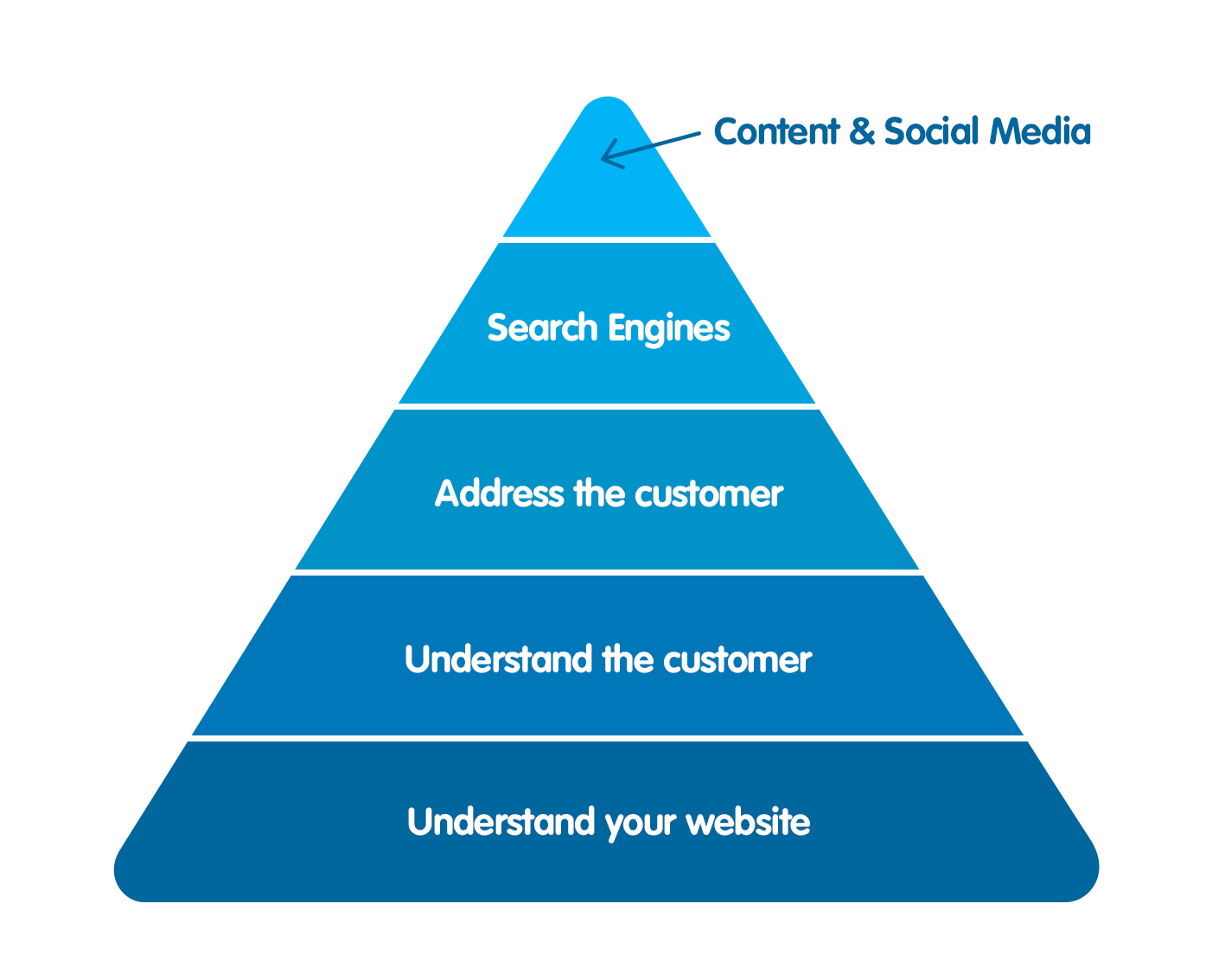How to find time for the 3 marketing priorities every small business owner must master
I had just finished my presentation on digital marketing at this year’s Enterprise Nation Startup Saturday. It was time for questions. And here came the first one.
“I get all that stuff. It makes sense. But when am I going to find the time to actually do it?” An avid note taker from the front row had raised a good point.
“I make jewellery. It started as a hobby, and now it has really snowballed. But I need to be making the stuff all day long in order for it to pay off. I don’t have time to do this as well.”
I’d heard similar stories before. Online marketing isn’t hard once someone has explained how to do it. But it still takes time. And which small business owner has enough of that?
Business is a seesaw where supply (making stuff) needs to balance demand (getting paid for it). If you’re light on the demand side, you need to find more customers. And that means setting time aside for online marketing.
So my answer to the question above was a simple “don’t then”. If your biggest problem isn’t demand, don’t worry about it – online marketing can wait until you’re looking to expand. For anyone who does find demand is an issue, or is doing online marketing but not seeing the results they’d like, I’ve made a simple set of rules. They make sure that when it comes to marketing your business online, you’re spending time on the right activities.
Here’s the academic stuff
Have you heard of Maslow’s hierarchy of needs? It’s a simple theory often portrayed in the shape of a pyramid with the largest, most fundamental levels of personal needs at the base. The idea is that we only address those at a higher level once the lower ones have been covered. You’ll find this helps you with your time management.
I’ve borrowed from Maslow to create ‘Nick’s hierarchy of online marketing’. The principle is exactly the same. You need to cover the stuff at the bottom before you begin to think about the topics higher up. There are lots of things towards the bottom of the pyramid that, once set up, won’t take up much of your time. That means once you get the basics sorted, you’ll free up time for the advanced stuff. If you stop trying to implement every level of the pyramid at once, you’ll find it feels like you have a lot more time for that stuff that matter and you’re likely to get better results.
Level 1: Analytics – Understanding your website
Ground zero for online marketing is to understand what’s happening on your website. I command you to use Google Analytics. If you don’t know how, read our beginner’s guide to Google Analytics.
[Tweet “Ground zero for online marketing is to understand what’s happening on your website”]
You need to know:
A. How people found your website
Did they use a search engine? Did they click on an advert? Did they follow a link from another website?
If you don’t know how they found you, you won’t know which bit of your marketing is already working. If you don’t know what’s already working, you won’t be able to improve it. You’ll also have no idea if you’re doing marketing that isn’t working for you – so you could be blissfully unaware that you’re wasting time and money.
B. How are people using your website?
Are they hitting the back-button straight away, a so-called ‘bounced’ visit? Are all your visitors ending up a particular page on your site?
You need to know how much they like your site already, and what they end up reading. For example, if your bounce rate is less than 30%, then your current site is probably working well quite well.
Or if everyone is going to your ‘contact us’ page, then it makes sense to put those details on the homepage.
Don’t leave analytics to someone else. It’s not hard. You can do it.
Level 2: Understanding your customer
You must find out who your customer is, and what needs your products address.
These are the questions to answer:
- Who would buy my product?
- Why would they buy it?
Don’t tell me that your product is for anyone. It’s not.
For example, if you sell hammers then yes, you could sell them to anyone. But it’s almost certainly going to be an amateur DIY’er or a professional builder who has a nail to hammer in.
They have a need to:
- Hang a picture
- For it to be easy
- For it to be low cost
You have to address that need and let them know why your hammers are easy to use, work really well for picture hooks, are fully guaranteed and low cost too.
There are lots of ways to find out what the customer need is.
You could ask your current customers what they were looking for when they found you. Or you could search on Google using keywords relevant to your business to see what others are saying. Try searching Quora to find out what questions people are asking about products like yours. You can get more information about understanding the needs of potential customers in our branding webinar.
Level 3: Address the customer need
Once you know what the customer wants, what their need is, you can address it.
Start writing:
1. Clear headlines that address the customer needs and give your customer a clear, compelling reason to read on.
2. Copy that adds detail, and talks about benefits of your solution, and not just features.
For example, if you’re a DJ don’t talk about the size of your record collection. That’s a feature. Instead describe the unforgettable experience your track choice will give the customer.
3. White space and images that make the page easy to digest.
I’ve said it before, but go easy on your reader. Let them breathe. Don’t drown them in words.
4. A call to action that instructs your customer to get in touch, to buy, to call you.
Leave the customer in no doubt what action you want them to take.
Once you’ve come up with this content, you need to use it everywhere. On your website. On your adverts. On your emails. Why not use it offline too?
Level 4: Search Engines
Of all marketing channels, across all types of businesses, search is almost always the biggest source of new customers. An incredible 93% of online experiences start with a search.
[Tweet “93% of online experiences start with a search”]
I bet my bottom dollar it could be the biggest source of new customers for your business too.
I’m not here to tell you how. We’ve got guides on SEO and pay per click for that.
Level 5: Content marketing & social media
Only when you have cracked the rest should you get to grips with content marketing and social media. The mistake that most people make is doing these first, because they are ‘free’.
But the reality is that they cost a lot of time. And you shouldn’t price that at £0 per hour. Then there’s also the issue of monitoring and tracking – if you haven’t laid the foundations of your marketing pyramid, then there’s no way you’re going to make a success of social and content marketing because you won’t know how you’re performing.
If you have made it this far up the pyramid, take a look at our webinar on using social media in your marketing mix, and our beginner’s guide to content marketing.
So should I hire an expert?
If it looks like a mountain to climb, the temptation is to get an expert to do it for you.
I’m fine with that. But if you do, remember:
1. Don’t get an expert until you get to level 4. Make sure you have everything below that covered yourself. Those first three levels of the pyramid are vital – if you haven’t got those, you’ll never have a full understanding of how your business interacts with customers. Without that, you’ll find it harder to grow.
2. You need to understand what the ‘expert’ is doing for you. SEO in particular is pedaled as a secretive craft, more art than science.
Newsflash: SEO is not a mystery. You can understand it all. Even if you call the pros, make sure you know what they’re doing. If you’re considering hiring an SEO agency, this guide should help you ensure you find someone who is reputable.
To Takeaway
This pyramid isn’t just something I’ve plucked out of thin air. The steps are in that order for a reason. If you don’t know what’s happening on your site, you won’t be able to track your online marketing. If you don’t know what your customer needs are, you won’t know how to reach them effectively. If you don’t address those needs, your marketing will fail. Good SEO will drive good traffic to your site. And finally, content marketing and social media are the cherry on the cake.
If you’re just starting with online marketing, or have tried it in the past and haven’t got results because you haven’t followed the system I’ve laid out above, then print off the pyramid and pin it to your wall so you see it every day and it becomes second nature.
Are you struggling for time to implement our online marketing advice? What have you found that works for you and your business? Leave us a comment below.


